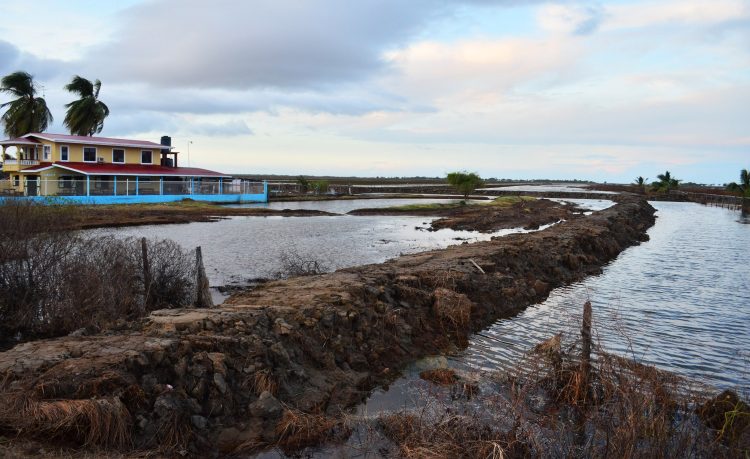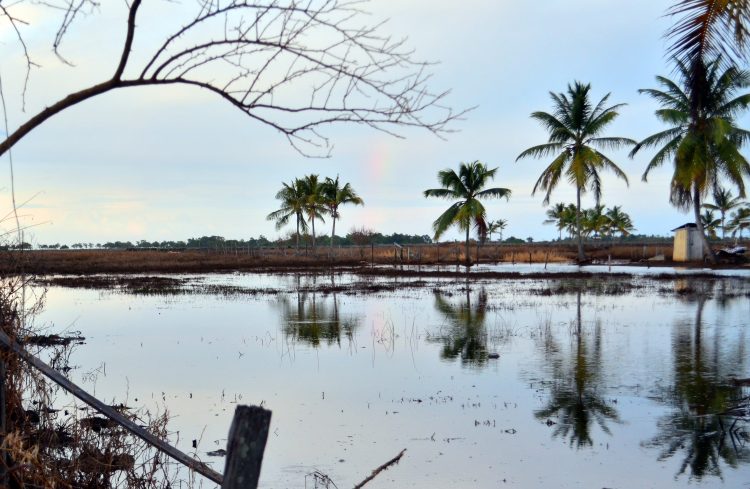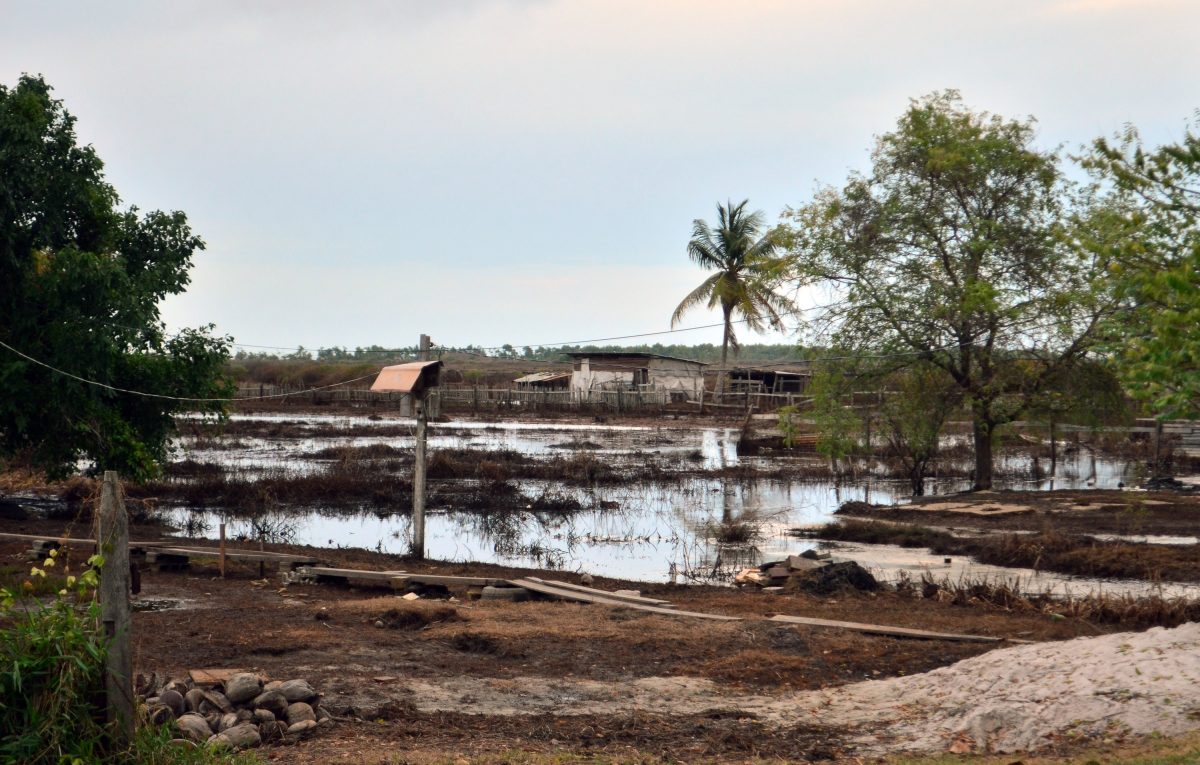Water from the recent spring tides that flooded yards and farmlands in the villages of Harmony Hall, Rebecca’s Rust and surrounding areas have begun to recede and residents are calling on the Ministry of Public Health to conduct a medical outreach in the affected communities to treat persons who may have contracted any diseases.
Residents made the call yesterday when Stabroek News returned to the communities to check on the situation.
During the visit, it was observed that from most yards that were flooded, the water have receded and water has been slowly receding from other low-lying areas.

A resident, Michelle George, told Stabroek News that the waters started to drain after the National Drainage and Irrigation Authority (NDIA) took a decision to cut a dam to facilitate drainage. She said that the water that flooded the yards began to recede on Friday.
However, she pointed out that some lands behind her home were still waterlogged and she is hopeful that it would recede in a timely manner.
Another resident, Andrew Abrams, told this publication that the water in his yard has completely receded but the yard remains soggy. He said that he and many other villagers were happy that the water has been draining off their lands. Abrams said that persons are still counting their losses from the flooding and he hopes that the government will be able to compensate households for the losses they suffered.
Like Abrams, George called on the Ministry of Public Health to visit.
“Persons in this area still uses pit toilets so it would be good if they can come and share out some medication that would help prevent diseases from spreading or even treat persons who might have contract some sort of disease,” George said. She added that they would be happy if the area is fogged since mosquitoes are breeding in the standing pools of water.

Additionally, residents who rear livestock said that they are finding it difficult to find fresh grass and grazing areas for their animals.
“We are happy that the water is going away but the animals have nothing to eat. If you look around, the water killed all the grass. Where these animals would graze? That is a new trouble for us now. They don’t have food to eat,” George lamented.
Meantime, residents highlighted that the NDIA has created higher earth dams around the perimeter of vulnerable yards to keep off the water from overflowing canals.
They are also hopeful that the contractors working on the sea defence will be able to repair a larger portion of the breach to minimise the effects of the next spring tide. The next spring tide is scheduled for mid-November.
The NDIA has plans to construct a dam, eight feet in height, between Fair-field and Dantzig, Region Five, to ease the suffering of residents.
The dam, construction of which is scheduled to begin today, is expected to decrease flooding in those areas from the upcoming spring tide.
Head of the NDIA, Fredrick Flatts had explained in an interview with the Department of Public Information (DPI) last week that the construction of the dam is the “best solution at hand.”
“We plan to build a secondary dam between Fairfield and Dantzig. The secondary [dam] would be very high, about eight feet high above the land and about 12 feet top width. It’s a significant dam. That dam will start at the sea defence to cross the Bellamy Canal coming about 800 feet into the land, then go parallel to the sea defence and come back in at Fairfield,” he was quoted as saying in the DPI report.
Two separate spring tides have recently devastated the lives of residents of that area, leaving them to cope with unexpected damage as well as being flooded. Hundreds of acres of rice fields and animals were lost as a result of the flooding. Losses are said to be in the millions.
The residents of Mahaicony became vulnerable as a result of the breaches in the sea defence along Dantzig to Fairfield. The three-kilometre stretch along the shoreline is currently being impacted by major erosion of the foreshore and depletion of the mangrove fringe.





